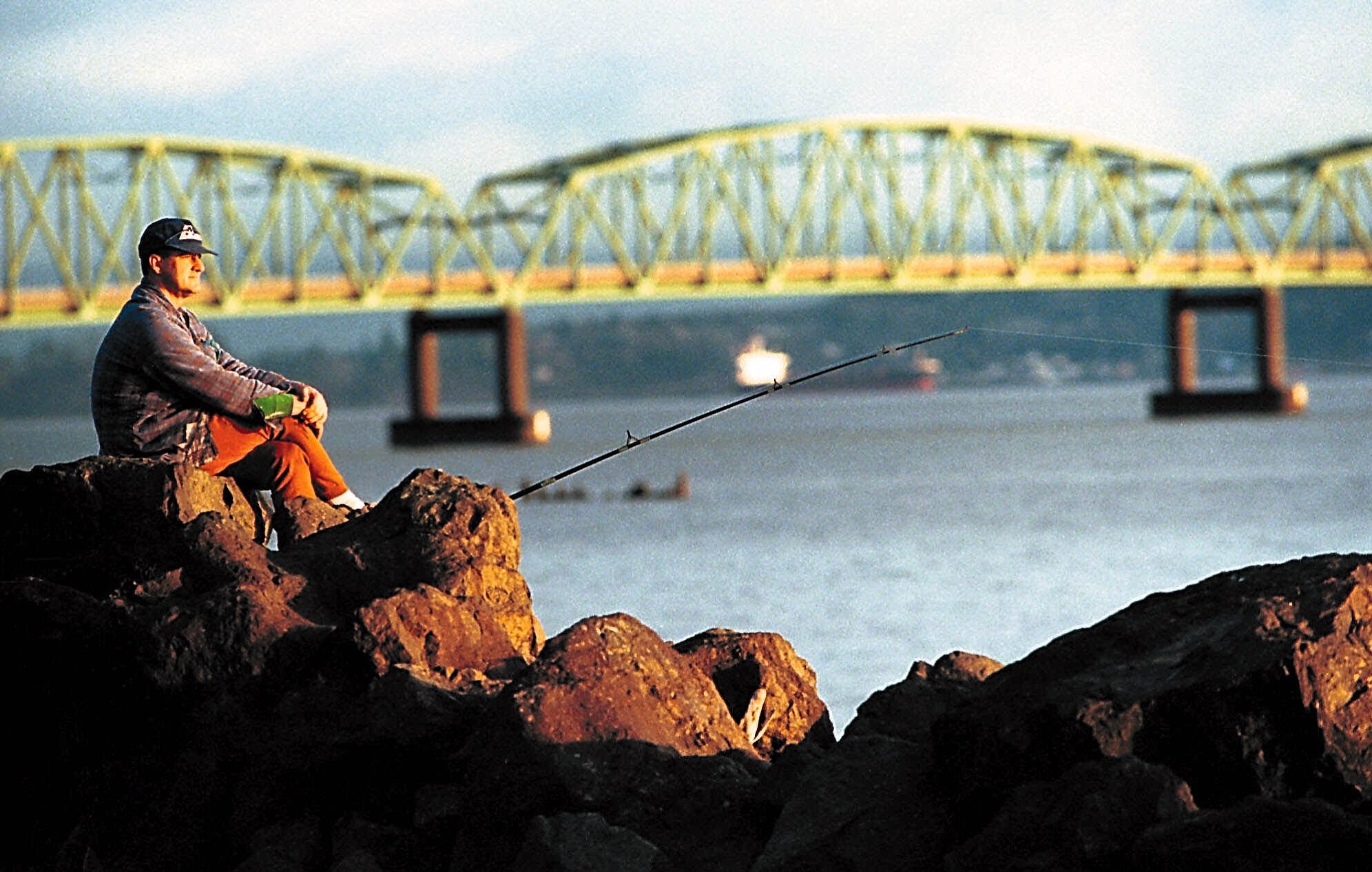Scenarios for a potential brief sturgeon retention season in the Columbia River estuary will be presented to the Washington Fish and Wildlife Commission in mid-April.
However, whether the seven-member citizen panel is interested in resuming sturgeon harvest, or if Oregon would agree, is unknown.
“Our commission has acted to close the fishery and that’s the status,” said Chris Kern, an administrator for the Oregon Department of Fish and Wildlife.
Sturgeon retention in the lower Columbia was closed in 2014 due to concerns by both states that the population is in trouble.
The estimate of legal-size sturgeon in the lower Columbia hit a recent-year low of 72,700 in 2012. It has increased the past three years and stands at 138,200 this year.
Some coastal fishing interests have asked for a limited resumption of retention in mid-May to mid-June.
Kelly Short, an Astoria guide, told a meeting of sport and commercial fishermen on Monday in Vancouver the coastal economy has been hurt by the closure and needs a lifeline.
“It would help the rural communities,” Short said. “They can’t just live on a three-week salmon season.”
Brad James of the Washington Department of Fish and Wildlife said there still are concerns about the low number of spawning-size sturgeon, the number of sublegals (shorter than 38 inches fork length) and spawning success in recent years.
James has developed models which envision 30 days of retention (15 in late May and 15 in early June) and 40 days retention (20 in each month) using a variety of minimum and maximum size limits to dampen the catch.
Guy Norman, regional director of the Washington Department of Fish and Wildlife, said he expects high interest if sturgeon retention were to reopen in the estuary. He suggested not allowing for more than a 6 percent harvest rate.
Two potential fishing seasons would fall under that guideline. Those fisheries would be a 30-day season with a 46-inch minimum and 52-inch maximum limit or a 30-day season with a 44-inch minimum and 50-inch maximum.
The 46-inch-minimum season would result in sport harvest of 3,090 sturgeon. The 44-inch-minimum season would result 4,305. The commercial fishery would be allocated a 20 percent share, bringing the harvest totals to 3,862 and 5,381, respectively.
Sport and commercial fishermen were split on resuming retention.
Bruce Crookshanks, a gillnetter, said the harvest would be at half the level of Oregon’s sturgeon conservation plan.
“We’re talking about half of the very conservative Oregon recovery plan,” Crookshanks said. “I don’t see that would be any harm.”
But gillnetter Les Clark of Chinook said sturgeon are non-existent any more in the stretch of the river he fishes near Washougal.
“Until we get a handle on the sea lions it’s ludicrous to put any effort on the sturgeon,” Clark said.
Steve Watrous of Vancouver said if the Department of Fish and Wildlife can support a limited sturgeon retention season he will trust the judgement of the biologists.
Watrous said he has fished for sturgeon in the estuary a couple of times in June when he could not cross the Columbia River bar and fish for salmon in the ocean.
“The fishing in estuary the past two years has been the best it’s been in the past 20 years,” he said. “I could not keep four rods in the water.”
Sport fisherman Harry Barber of Washougal said it appears a dip in the legal size population will happen in three or four years. Spawning success is down, plus sturgeon no longer can be seen rolling below Bonneville Dam or being preyed on by sea lions.
“I think this stock is in far worse shape than a lot of people think,” Barber said.
Commercial fisherman Steve Gray of Pacific County said he has no faith in the population estimates.
“I think you’d better sit down for more than a year to give them a chance,” he said.
Kern noted that the spawning population estimate is 3,690 sturgeon, which is below the minimum of 3,800 in Oregon’s conservation plan.
Lance Beckman of White Salmon, a retired sturgeon research biologist, said the only way to produce enough sturgeon in the Columbia for high-quality fishing is with a hatchery. The habitat degradation and predators otherwise are overwhelming.
Norman said the Washington commission will be briefed on the potential retention scenarios and Monday’s discussion on April 10.
Kern, however, sound tepid, at best, about resuming retention.
“I’ve not made a pitch to our commission that we need to go fishing,” he said.




